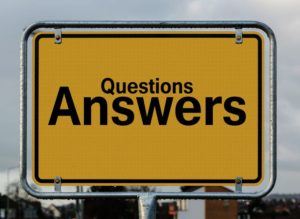Congratulations on your new home, job, vacation spot, construction project, antique gift, or other plot device that has invited a restless spirit into your formerly-peaceftul storyline!
While most of the characters who take the time to look up what to expect in a haunting are the protagonists, I’d like to give a special shout-out to all of the supporting characters who were attentive enough to realize that something was seriously wrong with this new development in your lives. The fact that you figured this out so soon speaks well of your chances of making it to the end.
On the topic of the changes you’ve noticed, you’re not hallucinating, exaggerating, or imagining anything. Those noises you’ve been hearing late at night when no else is around are real, and the spirits are only going to amplify their attempts to grab your attention if you don’t act now.
Unlike post-apocalyptic storylines, secondary characters aren’t doomed to die in these tales, and not every protagonist is guaranteed to survive either. Sometimes everyone lives. In other cases, everyone dies. Every haunting is unique in this regard.
So much depends on what sort of spirit you’re dealing with, how quickly you figure out that they are a threat, and how intelligently you respond to the escalation in their behaviour after that.
All characters regardless of their role in the plot should follow these rules if they want to survive:
- Escape through one of the rare and usually obscurely-marked exit doors. If you happen to notice what is really going on before the end of the first scene and the spirits have shown themselves capable of any violent behaviour at all, this is by far your best chance for survival. This technique generally doesn’t work, though, which leads me to the rest of this list…
- Research the history of the haunted item or location. Visit your local historical society, library, senior centre, nursing home, or any similar place that may have first-hand accounts of how your ghost died and what he or she may needs in order to move on to the next world. If the first hints of a haunting happen when these places aren’t open to the public, looking up any information you may already have online is an acceptable substitute as long as you follow up on any leads you found first thing in the morning.
- Don’t tolerate any distractions until you’ve completed the previous assignment. Any character who attempts to downplay your concerns or delay your research for any reason at all is a threat to your survival. They almost certainly will not be doing this on purpose, but this doesn’t make them any less dangerous. Avoid them as much as possible until after the climax has ended (assuming they survive that long).
- Look for discrepancies. Sometimes newspaper articles, diaries, eyewitness testimonies, and other pieces of evidence are incomplete, accidentally inaccurate, or even purposefully fabricated for any number of reasons. If the various accounts of the spirit’s life and death are contradictory, keep digging until you’ve found more clues about what really happened. Do not discount any records immediately, but also avoid assuming that you know the whole story this early on in the plot. You almost certainly do not.
- Never split up the group in a haunted building. Does this even need to be said anymore? No matter how tempted you may be to speed up your exploration of the grounds, we all know that this never ends well for ghost-hunting groups that attempt it. Stick together and stay alive.
- Call in a psychic. Yes, I know that they aren’t always helpful in these sorts of plots. Some of them act like they’ve never met a vengeful spirit before, and others honestly don’t seem that psychically sensitive at all! I’m not saying you should take everything they say as the unvarnished truth, but they may be able to provide pieces of the puzzle that no one knew about at the time of the victim’s violent or sudden death.
- Listen to the psychic’s recommendations. If they tell you the spirit is violent and dangerously uncooperative, follow their instructions on how best to deal with such an entity without delay. This includes moving away from your dream home or giving up on that desperately-needed trip if that’s what they recommend. Nothing is worth risking your life over.
- Don’t bother throwing away or destroying haunted objects. As thrilling as it might be for readers who are brand new to this genre to see the horrified look on your face when that doll or other item magically ends up right back in your home in pristine condition, everyone else know that this is nothing but a waste of time. Call in a second psychic instead if you really insist on dragging out the rising action or climax.
- Burn the bones. If there’s one thing that Supernatural has taught me, it’s that the fastest way to permanently get rid of a ghost is by finding their grave and burning their remains. Make this a priority if appeasing the spirit in other ways doesn’t work the first time you attempt it.
- Double-check your work. Just because you think you’ve found the right grave or performed the correct ritual doesn’t mean there are no loose ends flapping around out there in this part of the plot. Don’t let down your guard until you’ve made sure that you’ve destroyed everything that’s tying the ghost to this realm and you really have reached the conclusion after all.
Final Thoughts
 A few of you are probably wondering if you’re actually in one of those rare paranormal stories that involves a completely harmless spirit. The fact that you read this far means this is extremely unlikely to be true. Even the most mischievous ghost who had a truly friendly nature would stop immediately and reveal their identity if they frightened someone. It’s only a joke if everyone is laughing along!
A few of you are probably wondering if you’re actually in one of those rare paranormal stories that involves a completely harmless spirit. The fact that you read this far means this is extremely unlikely to be true. Even the most mischievous ghost who had a truly friendly nature would stop immediately and reveal their identity if they frightened someone. It’s only a joke if everyone is laughing along!
The fact that you’re worried enough about your haunting to read this essay means that you’re not dealing with one of those rare spirits that is only rattling your dishes or opening your kitchen cabinets as a lighthearted attempt to grab your attention.
Listen to your intuition. If you do that and follow the steps listed above, you still stand an excellent chance of living long enough to either see the ghost move onto the next world or transferring to a safer place to live yourself.
Previous posts in this series:


 Long and Short Reviews receives more requests for reviews than it’s current pool of reviewers can read.
Long and Short Reviews receives more requests for reviews than it’s current pool of reviewers can read. One of the biggest reasons why I like Long and Short Reviews is their policy of only posting honest, snark-free reviews.
One of the biggest reasons why I like Long and Short Reviews is their policy of only posting honest, snark-free reviews. As I alluded to above, writing reviews are one of the best ways to support authors. I have a wide circle of friends who are writers, and many of them talk about the difficulties of finding potential fans out there.
As I alluded to above, writing reviews are one of the best ways to support authors. I have a wide circle of friends who are writers, and many of them talk about the difficulties of finding potential fans out there. The comment sections of the reviews and blog posts on Long and Short Reviews are a wonderful place to browse if you have some free time this week.
The comment sections of the reviews and blog posts on Long and Short Reviews are a wonderful place to browse if you have some free time this week.










 Thank you to Bread from
Thank you to Bread from  What is your spirit animal?
What is your spirit animal? Title: The Summer That Refused to End: What Really Happened to Ontario in 2017
Title: The Summer That Refused to End: What Really Happened to Ontario in 2017











 Clean It Up
Clean It Up One of my favourite books when I was a preteen was Lois Lowry’s “The Giver.” It’s an excellent example of what happens when authors don’t explain how their worlds work.
One of my favourite books when I was a preteen was Lois Lowry’s “The Giver.” It’s an excellent example of what happens when authors don’t explain how their worlds work. By the end of the first page, I knew I was wrong about that. It was a real struggle to finish it, too, because of how much time the author spent telling the audience what was happening instead of showing it to us. When I closed my eyes, I couldn’t visualize anything that had happened in the scene I’d just read.
By the end of the first page, I knew I was wrong about that. It was a real struggle to finish it, too, because of how much time the author spent telling the audience what was happening instead of showing it to us. When I closed my eyes, I couldn’t visualize anything that had happened in the scene I’d just read. No, this advice isn’t only for people who are writing nonfiction or historical fiction. After listening to one of my writer friends talk about this on Twitter lately, I’ve come to agree with her stance on this issue: everything that can be researched should be researched!
No, this advice isn’t only for people who are writing nonfiction or historical fiction. After listening to one of my writer friends talk about this on Twitter lately, I’ve come to agree with her stance on this issue: everything that can be researched should be researched! Lately I’ve been participating in an online discussion about a famous series that started off beautifully and ended in a way that irritated many of its longterm fans.
Lately I’ve been participating in an online discussion about a famous series that started off beautifully and ended in a way that irritated many of its longterm fans.